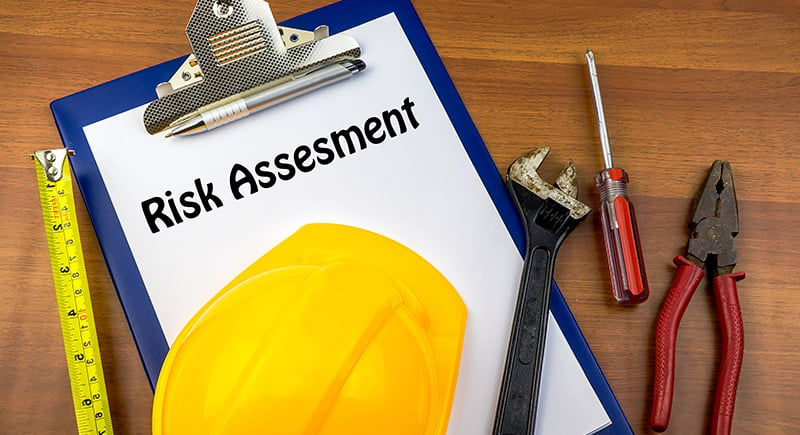
By
Rob Boyle
October 10, 2024
Updated
October 10, 2024

How can I evaluate the risks of a task at work?
Hazards and risks can occur at any work site. It is important to understand hazard recognition and risk tolerance in order to evaluate risks and prevent any potential accidents from occurring.
A critical element of any effective safety and health program is the proactive, continuous identification, assessment, and communication of hazards to prevent or control workplace injuries, illnesses, and incidents.
What is a hazard?
A hazard is an unsafe condition or unsafe act that when activated could result in damage to equipment, property, or people.
What is hazard recognition?
Hazard recognition is a means of identifying, assessing, and prioritizing hazards, both existing and potential. Hazards are always present regardless of the location, and it is imperative to be able to demonstrate hazard recognition in all areas and aspects of your workplace and personal life.
Employers have the legal responsibility to identify and control workplace hazards to the best of their ability to protect workers. Likewise, workers have the right to know about the hazards of the job and how to protect themselves.
Workers are responsible for ensuring they are following company rules that outline the hazard and control process. It is also the responsibility of all workers to understand what a hazard is, what the dangers are, how they can affect people, property, and the environment, and how to prevent them.

Types of hazards
Hazards are classified into categories:
- Biological: Viruses, bacterial, insects, and respiratory
- Chemical: Gases, dust, fumes, vapors, and liquids
- Ergonomic: Posture or workflow, manual handling, repetitive movements, poor equipment design of workstation
- Physical: Electrical, fire, slippery floors, objects in walkways, excessive noise
- Psycho-social: Stress, anxiety, workplace violence, bullying
- Safety: Confined space, ventilation, temperature, heights, unguarded machinery
How can I identify hazards and risks in the work place?
How much time you spend recognizing and controlling hazards will affect the safety of your workplace. The goal of a safe workplace is to prevent incidents and injuries from happening, and it takes all workers, regardless of role or seniority, to accomplish this. Recognition of hazards is of the utmost importance for the safety of all those who work for an organization.
- Recognize and Understand: You need to be able to recognize the hazard and understand how it will or can affect you, co-workers, property, and/or the environment. Determine what hazards are present at the work site.
- Assess: Measuring the consequences and severity of the hazard enables you to control or mitigate it. The consequences should be prioritized on a “worst first” basis. Assess the level of risk for the hazards identified.
- Control: After prioritizing the hazards on a “worst first” basis, assign at least one control for every high and medium hazard that was identified. Ideally, each hazard would have a combination of controls in place for protection if eliminating the hazard is not an option. Implement strategies to eliminate or reduce the risk involved.
- Document: All hazard assessments must be documented. Documentation must include all hazards, what controls are put in place for protection, and must be signed off by all workers related to that particular job. Documentation and communication of the hazard to all others is key.
- Follow-up: A hazard assessment must be revisited any time a condition or physical effect changes. For example, if rain develops and poses a new hazard, a new assessment must be conducted to discuss the new potential for harm and/or incident and what control(s) can be put into place. Monitor and follow-up to ensure the control strategies chosen are implemented and effective.
The challenge with hazard assessment and prioritization is that individuals perceive hazards differently. One individual may perceive a situation as hazardous with the potential to cause severe damage, while another perceives the same situation as minimally hazardous with lower risk. Hazard recognition and assessment is somewhat personal and is highly dependent on how hazards are perceived.
Following Risk Assessment Guidelines
Prior to starting work, take a few moments to evaluate the work area and work activity for potential hazards and discuss their controls. Below are just a few guidelines you can follow to take a very positive step towards the most important thing: going on home safe at the end of each day to your families, friends, and loved ones.
- Maintain good housekeeping standards
- Inspect tools and equipment prior to use
- Maintain personal protective equipment (PPE) as per the manufacturer's specifications
- Follow established procedures and do not take any shortcuts
- Report hazards and incidents as soon as possible
